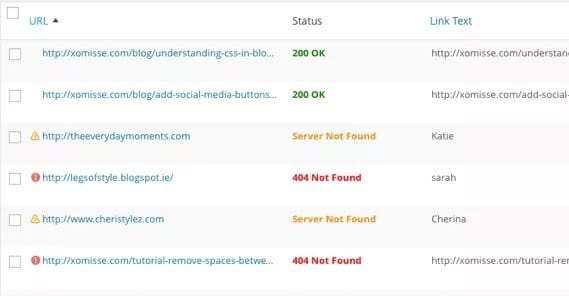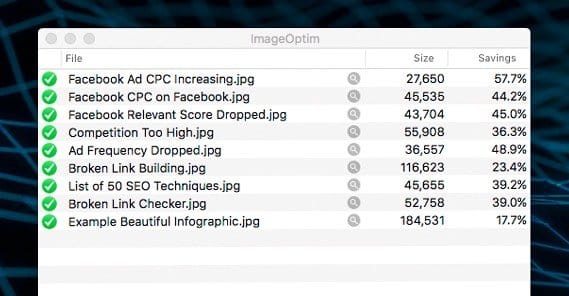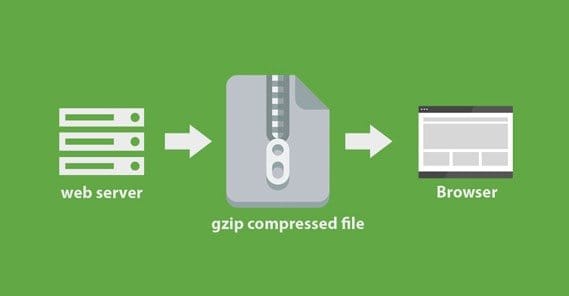List of 50 Techniques to Improve Your SEO for Free

Over the past few months, we’ve compiled 50 effective techniques that can improve your SEO, and that you can implement for free.
But first, some fundamentals: keyword research. SEO no longer relies on specific uses of exact keywords or keyword density, but keywords are important for paid advertising and for guiding the general direction of your content. Take your time to learn some keyword research skills so you can build a list of topics to cover throughout your content marketing.
Let’s get into some of the more advanced optimization techniques.
Content Strategies
Remove duplicate content. Duplicate content is heavily penalized by Google. It doesn’t even have to be an exact duplicate; even something as minor as two FAQs on the same topic with roughly equivalent advice can count. Audit your content to find any cases of duplication – as well as duplication from other sites – and remove or dramatically change those posts.
Fix bad content. Content that plagiarizes, content that is used for thin affiliate posts, content that has broken code in it; anything less than your best should be fixed up or removed. You can fix up content pretty easily by replacing it with better content on the same topic. Don’t worry about saving vestiges of the old content; it’s not worth the trouble.
Expand thin content. Anything less than 1,000 words is probably not worth keeping published. Many marketers recommend at least 1,800 words, and some consider the ideal length to be over 3,000. The point is, you should write long, valuable content instead of a lot of smaller posts.
Create and publish content regularly. A regular content schedule will help your online presence immensely. It helps people become recurring visitors and it makes sure you always have something fresh for Google. Don’t worry about volume; consistency is key. I recommend 2-3 posts per week, though you can do just one if you need to.
Create infographics. Whenever you have the chance to create alternative types of content, do so. A good long blog post can be condensed into an infographic, which you can pay someone to make for you, or use tools to make manually.
Create explainer videos. Like the above, a good blog post can be converted into video content. You can also make an explainer video about your core service to use in landing pages and other elements of your marketing.
Create slide decks. Turning a blog post into a series of bullet points allows you to throw them into a PowerPoint-like deck of slides, which you can publish on sites like SlideShare for another source of traffic and links.
Create audio posts. Turning your blog posts into podcasts opens them up to another audience. Busy managers and entrepreneurs like to consume their content in otherwise empty times, like commutes. Audio posts facilitate this.
Create industry roundups. You can gain a lot of influence in your industry by monitoring other industry blogs and creating weekly or monthly digests of the best content those blogs have posted in that given time.
Write response posts to other bloggers. When a high profile blogger publishes a piece of content that expresses an opinion, you can write one that responds to them. If you argue the opposite opinion well enough, you can get a lot of circulation.
“Steal” existing content. Don’t actually steal content, obviously. Look at pages 3-10 on Google and look for good content from sites that are otherwise dead, and cover the same topic but better. Often you will be able to poach links and generally outrank the source.
Give interviews through HARO. Help A Reporter Out is an organization that links together industry information sources, like you, with reporters looking to do a story on your industry. You get name recognition and links from the deal.
Getting Traffic
Keep a newsletter running. A newsletter is one source of traffic you control that doesn’t rely on a site like Google, Facebook, or another third party to funnel it to you. It’s a lot more resilient and thus always good to have.
Don’t forget local SEO. If you’re in a position to get local relevance, make sure to include elements like your location in some of your content and in prominent positions around your site.
Participate in online communities. By joining forums and groups on Facebook or LinkedIn, you can market yourself by being a tangible presence. Make sure the groups are focused on your area of expertise and that you follow their rules.
Make heavy use of social media. People visit your site because they see the links on their social profiles and they look interesting. By using Facebook, Twitter, Reddit, and others, you have a lot of ability to draw people in to your site.
Use broken link building. Broken link building involves finding links to content that no longer exists, finding something you have to replace it, and informing the site owner about the link and the replacement. Often they will switch it and get you a free link.
Implement a guest posting strategy. Guest posting on a regular basis to a wide variety of industry sites can get you an absolute ton of good backlinks, which pushes your site higher in the search results and gives you a lot of name recognition.
Submit your site to people who publish roundups. I mentioned creating roundups above, but chances are some other people already do that. If you can find those people and submit your site to them, there’s a decent chance they can add you to their rotation and you can get links and recognition out of it.
Submit your site to content aggregators. Aggregators are sites that simple link to any content from any of the blogs in their network. Adding yourself to the network adds you to a rotation where you will get some low-value links and some traffic. It’s not great, but it’s one more minor boost to stack on top of the rest.
Submit your site to article directories. Article directories are tricky to use. You don’t want to submit yourself to directories that will hurt your SEO, or to directories that won’t bring you any benefit. You can read more about directory submissions here.
Connect with social media influencers. There are definitely people in your industry who are powerful on social media. When you engage with these people you can become one of the people they reference, talk to, or link to in their discussions. This gives you a boost of traffic every time it happens.
Fixing Up the Site
Update post titles. Titles are meta information that Google uses to create snippets and that users use to determine if they’re interested in clicking on the content. Update post titles throughout your site to make them unique, valuable, and include a related keyword.
Update post descriptions. Just like post titles, descriptions are important for snippets and for user information. They’re also one of the relics of old SEO that could be holding your site back. Revamp all of your meta descriptions to get a good boost in SEO.
Add meta data to images. Adding meta information to images makes your site more accessible to people with disabilities and it helps Google index your images to make sure they’re relevant to the post. Image file names, descriptions, and alt text are all important.
Remove broken links. Scour your site – or use a tool like this one – to look for any link that no longer works. Remove those links or replace them with links to better content. Broken links aren’t hugely damaging, but if you have a lot of them it can be good to fix them up.
Make human readable permalinks. Changing your permalink structure away from strings of numbers and to post titles can make a big difference in how often people click them on social media and other locations. It can be a big change on an older site, though, so study to see if the initial SEO hit is worth the value.
Add more internal links. Internal links in general are often ignored, but they can be very good for your SEO. People click from one to the next and will stay on your site longer, giving you more value for each visitor.
Add internal links to suffering pages. While you add internal links, look for pages on your site that aren’t doing so hot, like they’re on page 2 or 3 of Google. Add links from your best pages to these suffering pages to get some link juice flowing to them. It won’t bump them to page one, but it helps. Bring up the lowest and the average rises.
Compress images for faster loads. When you post an image online, everyone who sees it will have to download it. You can often compress the image without actually losing any detail, and it will make it faster to load.
Fix broken scripts. Any time you have broken code, it’s doing two things. It’s delaying your site loading and it’s causing errors. The user might not see those errors if their browser hides them, but Google certainly does. Every bit of bad code is holding you back like a weight.
Remove outdated plugins. Plugins that haven’t been updated in over a year – particularly for the WordPress platform – are security liabilities. Often they won’t actually be dangerous, but you don’t want to risk opening your site up to exploitation, so remove and replace them if possible.
Remove plugins you don’t use. Every plugin you use on your site is by definition slowing down your site, because it’s code that has to load. Some are back-end only and won’t have a huge impact, and some are one-time runs, but it’s still beneficial to remove them so there’s less clutter on your server.
Create and submit a site map. A sitemap helps Google find all of your pages instead of needing to scour your site manually. You can create a sitemap very easily and you can submit it to Google using your webmaster console.
Vary your anchor text. Whenever you link to something, it can be tempted to simply add a “click here” but that doesn’t give you much value. Ideally, you want longer, more descriptive link anchors, like the ones I’ve been using throughout this post. I’m guilty of using short anchors on my sites, but I try to vary them whenever I can.
Encourage comments on blog posts. When people comment, they are more likely to share the post, and they are more likely to convert later on down the road. Encourage comments with questions throughout your post, and respond to comments when they’re made.
Switch to a better web host. This doesn’t apply to everyone, but if you have a bad web host, downtime or a “bad neighborhood” can be holding you back. Using the cheapest of the cheap is generally not the best idea when your business depends on it.
Enable compression on server files. Enabling compression on your server makes every file the user has to load smaller, which means the user can load your site faster. Since site speed is a ranking factor, you want to enable compression as much as possible.
Minify your source code. Using a “minify” tool will compress the source code in your pages. It doesn’t look pretty, but it doesn’t need to look pretty as long as it works. It makes the files smaller, which is beneficial for all the reasons above.
Avoid overusing ads or affiliate links. Overuse of ads or a too-high density of advertising links will get your site penalized. More than one good affiliate site has bit the dust because of it.
Add nofollow to sketchy links. Any time you link out to a site, ask yourself: is this a site I recommend to my friends? If it’s not, add the nofollow attribute, so Google doesn’t think you’re trying to pass value to bad sites.
Add noindex to pages you don’t want visible to the public. Any time you have a system file or page that’s meant for internal use only, add it to a noindex. It’s better to not have them if possible, but hiding it from public view is the next best thing.
Add social sharing buttons. Remember how I said to make heavy use of social media? Part of that is with using social sharing buttons on your blog. I recommend Social Warfare.
Make a responsive design. If you don’t already have mobile compatibility, creating a responsive design for your site will give you a huge boost in the rankings. Google is giving a lot of preference to mobile sites these days.
Speed up your site load speeds. Anything you can do to speed up your site that I haven’t already mentioned is something you should implement. I can’t cover it all, even in a 50-item list.
Use a CDN. A content distribution network makes sure that there is always a geographically local server to distribute content to your readers, so they don’t have to rely on your home server across the country. It also has DDoS protection baked in, usually.
Disavow bad backlinks. Audit your backlink profile and identify links from sites that should not be linking to you. They might be hurting you somewhat in your SEO, depending on the situation. Add them all to a list and disavow the bad links.
Check for existing penalties to fix. Log into your account with Google’s webmaster tools and you will see if Google has levied any actual penalties on your site. If they have, take the time to fix them, and it will help immensely.
Finishing Touches
Audit and repeat frequently. SEO is an ongoing process, not something you do once and forget. Keep up with the times and re-audit your site every six months to one year. This way you’re always on the ball.
 ContentPowered.com
ContentPowered.com










